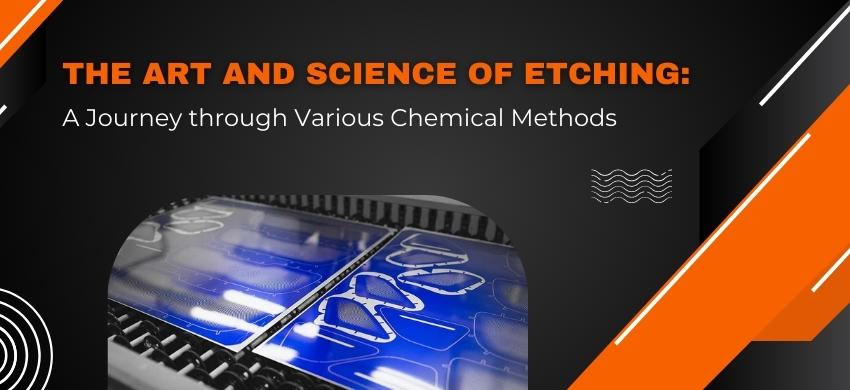UK-based suppliers, applicators and trainers. Call us today to get a free sample : 01604 644604


Chemical etching is a technique for selectively removing material from a substrate using chemicals. It is a flexible and economical approach for creating intricately shaped, high-precision metal parts. We'll explore numerous chemical processes utilised in chemical etching in this post.
Chemical etching is a form of subtractive production that uses chemicals to remove substances from a substrate in a targeted manner. The method is often called chemical milling, photo etching, or photochemical cutting. It is a flexible and economical approach for creating intricately shaped, high-precision metal parts. In the aviation, medical, automotive, and electronics industries, the method is widely employed.
There are multiple processes in the chemical etching process:
Any dirt, grease, or other impurities obstructing the etching process are removed from the substrate.
The photoresist is applied to the substrate during lamination. The desired design is transferred onto the substrate using the photoresist, a light-sensitive substance.
A mask with the desired pattern exposes the photoresist to light. The exposed portions of the photoresist become intractable in the developer.
The parts of the photoresist that were not exposed to light are dissolved by submerging the substrate in a developer. In the regions where material needs to be removed, this exposes the substrate.
The exposed material is removed only after the substrate has been submerged in an etchant. Depending on the substance being etched, the etchant may be either an acid or a base.
The residual photoresist from the substrate is taken off, leaving the desired design in its place.
Chemical etching employs a variety of chemical techniques. Among the most popular techniques are:
Acid etching is selectively removing material from a substrate using an acid. According to the substance being etched, the acid may be hydrochloric, nitric, or sulfuric acid. Stainless steel, brass, copper, and other metals are frequently etched using an acid solution.
In alkaline etching, a base is used to remove particles from a substrate in a selective manner. Depending on the substance being etched, the foundation can be sodium hydroxide, potassium hydroxide, or ammonium hydroxide. Aluminium and titanium are frequently subjected to alkaline etching.
Electrochemical etching is a method of selectively removing material from an object using an electric current. An electric current is run through the electrolyte solution while the substrate is submerged in it. The material at the anode dissolves due to the current, producing the desired design in its place. Metals like titanium and stainless steel are frequently etched using an electrochemical process.
Plasma etching is the method of selectively removing particles from a backing material using a plasma. Ionizing a gas, such as oxygen, nitrogen, or argon, produces the plasma. The material on the substrate is eliminated as a result of the ions in the plasma reacting with it.
It's crucial to pick a chemical etching company with experience and knowledge in the industry if you're seeking for one. A seasoned business will be able to supply you with high-quality parts that satisfy your requirements. They will also provide you with various options for materials and finishes.
Advanced chemical etching is a procedure that uses cutting-edge methods to create intricately shaped metal objects with high precision. A photoresist that is applied on the substrate is used during the process. After that, a mask with the appropriate design is placed over the photoresist, and it is exposed to light. Depending on the substance being etched, an acid or a base is used to etch the substrate. The aerospace, medical, and electronics industries frequently use advanced chemical etching to create parts.
A flexible and economical technique for creating high-precision metal objects with complex geometries is chemical etching. Chemicals are used in the procedure to remove material from a substrate in a targeted manner. Chemical etching can be done using a variety of chemical processes, such as acid, alkaline, electrochemical, and plasma etching. It's crucial to pick a chemical etching firm with experience and knowledge in the industry if you're seeking one. Advanced chemical etching is a procedure that uses cutting-edge methods to create intricately shaped metal objects with high precision.